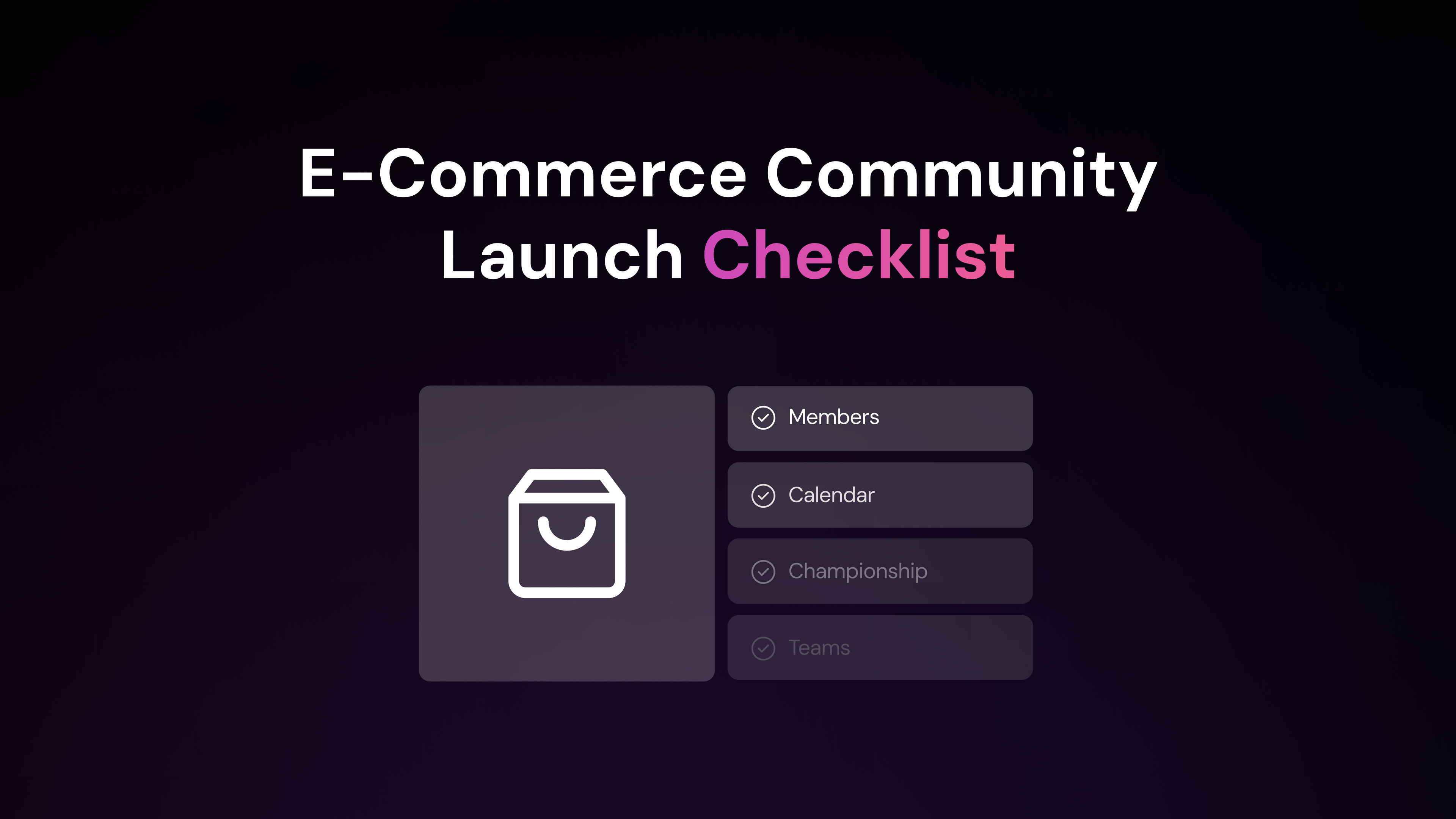You’ve built an e-commerce site, and traffic is flowing. But how do you turn those visitors into revenue beyond just product sales?
One effective way is through ad integrations. This strategy can help you generate additional income by placing ads on your site.
Here’s a closer look at how you can monetize your e-commerce traffic with ad integrations.
What is Monetizing E-commerce Traffic with Ad Integrations?
Monetizing e-commerce traffic with ad integrations involves generating revenue from your online store visitors through strategically placed advertisements. This process typically involves partnering with ad networks or directly with advertisers who provide the ads.
Ads can be displayed on various pages of your e-commerce website, including the homepage, product pages, and checkout pages. These ads can take different forms, such as banners, videos, or native ads that blend seamlessly with your site’s content. By integrating these ads, you can create a new revenue stream that complements your existing sales.
Types of Ad Integrations for E-commerce Websites
Display ads include banner ads, rich media ads, and video ads. These ads are typically placed in prominent locations on your website to capture the attention of visitors.
Display Ads
Banner ads are static or animated images that appear at the top, bottom, or sides of web pages. Rich media ads are interactive and can include elements like animations, audio, or video to engage users more effectively. Video ads are short clips that play automatically or upon user interaction, providing a dynamic way to showcase products or promotions.
Native ads blend seamlessly with your website’s content and design, making them less intrusive and more engaging for users.
Native Ads
These ads often take the form of sponsored product listings or recommended products that match the look and feel of your site. Because they align with the user’s browsing experience, native ads can be more effective in driving engagement and conversions. They appear as part of the content, making them feel like a natural extension of the shopping experience rather than a disruptive advertisement.
Retargeting ads are personalized based on user behavior and preferences, making them highly relevant.
Retargeting Ads
These targeted advertisements are shown to visitors who have previously interacted with your website. For example, if a visitor viewed a specific product but did not make a purchase, retargeting ads can display that product again, reminding the visitor of their interest. This approach increases the likelihood of conversion by keeping your products top-of-mind for potential customers. Retargeting ads can appear on various platforms, including social media, search engines, and other websites, ensuring broad reach and repeated exposure to your brand.
Benefits of Monetizing E-commerce Traffic with Ad Integrations
Monetizing e-commerce traffic with ad integrations provides an extra revenue stream that complements your existing product sales.
Additional Revenue Stream
This approach diversifies your income sources, reducing reliance on just one method of generating revenue. By integrating ads, you can tap into the potential of every visitor, whether they make a purchase or not. This means even if a visitor leaves without buying, their interaction with ads can still contribute to your bottom line. This diversification helps stabilize your income, making your business more resilient to market fluctuations. Discover more monetization strategies for your website with Arena.
Relevant and targeted ads can actually enhance the shopping experience for your users.
Improved User Experience
When ads are aligned with user interests and behaviors, they feel less intrusive and more like helpful suggestions. For example, if a visitor has been browsing running shoes, displaying ads for related products like athletic wear or fitness gadgets can be beneficial. These targeted ads help users discover new products or promotions they might have missed otherwise. This not only improves their overall experience but also increases the likelihood of repeat visits and purchases. Learn how to optimize your e-commerce customer experience with Arena’s tools.
Displaying ads from reputable brands can significantly boost your e-commerce website’s credibility.
Increased Brand Exposure
When visitors see well-known brands advertised on your site, it can enhance their perception of your business. This increased brand exposure not only builds trust with your audience but also attracts potential partners and advertisers. High-quality ads can make your site look more professional and trustworthy, encouraging more visitors to engage with your content and products. This credibility can lead to more partnerships and advertising opportunities, further driving your revenue growth. Enhance customer interaction with Arena’s engagement tools.
How Ad Integrations Work on E-commerce Websites
Ad integrations on e-commerce websites involve a straightforward process that allows you to generate revenue from your site traffic. First, advertisers or ad networks provide you with ad codes or tags. These are snippets of code that you will need to place on your website. The ad codes are designed to fetch and display ads from the advertiser’s server.
Next, you, as the e-commerce website owner, will place these codes in designated ad slots on your website. These slots can be located on various pages, such as the homepage, product pages, or even during the checkout process. The placement of these ads is strategic, aiming to capture the attention of your visitors without disrupting their shopping experience.
Once the ad codes are in place, ads are displayed to your visitors based on targeting criteria set by the advertisers. These criteria can include factors like user behavior, browsing history, and demographic information. For example, a visitor who has previously shown interest in fitness products might see ads related to sports equipment or health supplements.
Ad performance is then tracked using various metrics. This includes impressions (how many times the ad is displayed), clicks (how many times the ad is clicked), and conversions (actions taken by the user after clicking the ad, such as making a purchase). These metrics help you understand how well the ads are performing and how much revenue they are generating.
Revenue is generated based on different models, such as cost per impression (CPM), cost per click (CPC), or cost per acquisition (CPA). In the CPM model, you earn revenue every time an ad is displayed 1,000 times. In the CPC model, you earn revenue each time a visitor clicks on an ad. In the CPA model, you earn revenue when a visitor completes a specific action, such as making a purchase after clicking the ad.
By understanding and implementing these steps, you can effectively monetize your e-commerce traffic through ad integrations, creating an additional revenue stream for your business. Explore more about ad-based revenue growth with Arena.

What are the Best Practices for Implementing Ad Integrations?
Implementing ad integrations on your e-commerce site requires careful planning and execution. Selecting the right ad network or advertiser is the first step.
Choose Reputable Ad Networks or Advertisers
Opt for reputable networks known for their reliability and quality. This ensures that the ads displayed on your site are from credible sources, which helps maintain your site’s integrity and user trust. Research different networks, read reviews, and consider their track record before making a decision.
Relevance is key when it comes to ad effectiveness.
Ensure Ads are Relevant to the Target Audience
Ads should align with the interests and behaviors of your target audience. Use data analytics to understand your audience’s preferences and select ads that match these insights. Relevant ads not only improve user engagement but also increase the likelihood of conversions, making your ad placements more profitable.
Ad placement is crucial.
Place Ads in Strategic Locations Without Disrupting the User Experience
Ads should be positioned in high-visibility areas without disrupting the user experience. Common strategic locations include the top of the page, sidebars, and within the content flow. Avoid placing ads in a way that interrupts the shopping process or annoys visitors. A seamless integration ensures that ads enhance rather than detract from the overall user experience.
Continuous monitoring and optimization are necessary to maximize ad revenue.
Regularly Monitor Ad Performance and Optimize for Better Results
Track key performance metrics such as impressions, clicks, and conversions. Use this data to identify which ads perform well and which do not. Experiment with different ad formats, placements, and targeting options to find the most effective combinations. Regular adjustments based on performance data help improve ad effectiveness over time. Learn how to optimize ad viewability with Arena.
Compliance with legal requirements and industry standards is non-negotiable.
Comply with Legal Requirements and Industry Standards
Ensure that your ad integrations adhere to data privacy laws, such as GDPR or CCPA, and follow best practices for user consent and data protection. Additionally, stay updated with industry standards to avoid penalties and maintain a good reputation. Compliance not only protects your business legally but also builds trust with your audience.
Implementing these best practices will help you effectively monetize your e-commerce traffic with ad integrations, creating a balanced approach that maximizes revenue while maintaining a positive user experience.
How to Get Started with Monetizing E-commerce Traffic
Start by analyzing your website traffic and user demographics.
Assess Your Website’s Ad Potential
Understanding who visits your site and what they do while there is key. Use analytics tools to gather data on visitor numbers, page views, bounce rates, and average session durations. Look at demographic information such as age, gender, location, and interests. This data helps you understand your audience and tailor ad placements to their preferences.
Next, identify ad placement opportunities. Look for high-traffic areas on your site where ads are likely to be seen. This could include the homepage, product pages, and checkout pages. Consider the user journey and think about where ads would be most effective without disrupting the shopping experience. Placement is crucial for maximizing visibility and engagement.
Once you’ve chosen an ad network, implement the ad code on your website.
Choose the Right Ad Network
Research and compare different ad networks. Each network offers various ad formats, targeting options, and payment models. Look for networks that align with your business goals and audience. Popular ad networks include Google AdSense, Media.net, and Amazon Associates. Evaluate their reputation, ease of use, and support services.
Consider factors like ad formats, targeting options, and payment models. Ad formats can include display ads, native ads, and video ads. Targeting options might involve demographic targeting, behavioral targeting, and retargeting. Payment models can be cost per click (CPC), cost per thousand impressions (CPM), or cost per acquisition (CPA). Choose a network that offers flexibility and aligns with your revenue goals. Stay ahead with the future of cookies in marketing with Arena.
Implement the ad code on your website.
Implement Ad Code
The ad network will provide you with ad codes or tags, which are snippets of HTML or JavaScript. Place these codes in designated ad slots on your site. Common ad slots include the header, sidebar, and footer. Ensure the placement is strategic and does not interfere with the user experience.
Test and verify ad functionality. After placing the ad code, check that the ads display correctly across different devices and browsers. Ensure the ads load quickly and do not slow down your site. Test the click-through functionality to make sure users can interact with the ads. Address any issues promptly to maintain a seamless user experience.
Regular monitoring helps you identify trends and areas for improvement.
Monitor and Optimize
Track ad performance metrics to understand how well your ads are doing. Key metrics include impressions, clicks, click-through rates (CTR), and conversions. Use analytics tools provided by the ad network or third-party tools to gather this data.
Experiment with different ad formats, placements, and targeting options. Try various combinations to see what works best for your audience. For example, test banner ads versus native ads, or try placing ads in different locations on your site. Adjust targeting settings to reach different segments of your audience. Experimentation helps you find the most effective strategies for maximizing ad revenue. Explore how to sell more digital products with Arena.
Continuously optimize for better results. Use the data collected from monitoring and experimentation to make informed decisions. Adjust ad placements, formats, and targeting based on performance. Remove underperforming ads and replace them with more effective ones. Regular optimization ensures your ad strategy remains effective and profitable.
5 Strategies to Maximize Ad Revenue on E-commerce Websites
Placing ads in high-visibility areas ensures they get maximum exposure.
Optimize Ad Placements
Key locations include the top of the homepage, sidebars, and within content sections. These spots naturally draw the eye, increasing the likelihood of ad interactions. Experimenting with different ad sizes and formats can also make a significant difference. Larger ads or those with engaging formats like videos or interactive elements tend to capture more attention. Regularly test various placements and formats to find the most effective combinations for your audience.
Retargeting campaigns are a powerful way to reach potential customers who have previously visited your site.
Leverage Retargeting
These campaigns show personalized ads based on user behavior, such as products viewed or added to the cart but not purchased. This personalized approach keeps your brand and products top-of-mind, encouraging users to return and complete their purchases. Implementing retargeting can significantly increase conversion rates, as it targets users already familiar with your offerings and more likely to convert.
Collaborating with advertisers whose products align with your website’s niche ensures the ads are relevant and valuable to your audience.
Partner with Relevant Advertisers
This relevance increases the likelihood of ad interactions and conversions. For example, if your e-commerce site specializes in fitness gear, partnering with advertisers selling health supplements or workout programs can create a cohesive and appealing ad experience for your visitors. Ensure the ads complement your content and enhance the overall user experience.
Header bidding is a technique that allows multiple ad networks to compete for your ad inventory in real-time.
Implement Header Bidding
This competition can drive up the price of your ad space, increasing your ad revenue. Implementing header bidding involves placing a script in the header of your website, which then sends out bid requests to various ad networks. The highest bid wins the ad placement. This method maximizes the value of your ad inventory by ensuring you get the best possible price for each impression. Learn how to boost e-commerce revenue with Arena.
Regularly analyzing ad performance data is crucial for optimizing your ad strategies.
Continuously Monitor and Adjust
Track key metrics such as impressions, clicks, click-through rates (CTR), and conversions to understand how well your ads are performing. Use this data to make informed decisions about ad placements, formats, and targeting. Adjust your strategies based on performance insights to improve ad effectiveness. Stay updated with industry trends and best practices to ensure your ad strategies remain competitive and effective. Continuous monitoring and adjustment help you maximize ad revenue and maintain a positive user experience. Don’t leave ad revenue on the table.
Is Monetizing E-commerce Traffic with Ad Integrations Worth It?
When you strategically place ads on your website, you tap into a new source of income that complements your existing sales.
Monetizing e-commerce traffic with ad integrations can provide a significant additional revenue stream. This approach allows you to earn money from visitors who may not make a purchase but still interact with the ads.
Diversifying your income sources is another key benefit. Relying solely on product sales can be risky, especially during slow sales periods. Ad integrations help mitigate this risk by providing a steady flow of revenue from ad impressions, clicks, or conversions. This diversification makes your business more resilient to market fluctuations and seasonal changes. Learn how to diversify revenue streams with Arena.
However, successful ad integration requires careful implementation and ongoing optimization. Simply placing ads on your site isn’t enough. You need to ensure that the ads are relevant to your audience and strategically positioned to maximize visibility without disrupting the user experience. Regularly monitoring ad performance and making necessary adjustments is essential to maintain effectiveness and profitability.
Balancing user experience and ad revenue is crucial. Ads should enhance, not hinder, the shopping experience. Irrelevant or intrusive ads can frustrate visitors and drive them away. On the other hand, well-placed, relevant ads can actually improve the user experience by introducing visitors to products or services they might find useful. Striking the right balance ensures that your site remains user-friendly while still generating ad revenue.
Successful implementation of ad integrations can lead to long-term financial benefits for your e-commerce business. When done correctly, it not only boosts your current revenue but also attracts potential partners and advertisers. This increased interest can open up new opportunities for collaboration and further revenue growth. Over time, a well-executed ad strategy can significantly enhance your business’s financial health and stability.
Get Started with Arena
Monetizing e-commerce traffic with ad integrations can significantly boost your revenue and enhance user engagement. Arena offers a comprehensive suite of tools designed to facilitate seamless content creation, interaction, and community building. With features like live blogging, customizable communities, and AI-powered personalization, Arena helps you maximize ad revenue while maintaining a positive user experience.
Ready to transform your e-commerce site into a revenue-generating powerhouse? Sign up now and explore how Arena can help you effectively monetize your traffic, increase engagement, and grow your business. Visit Arena’s Pricing Page to get started today.



